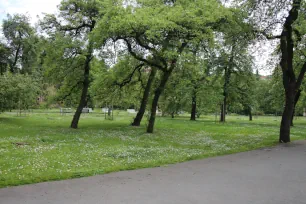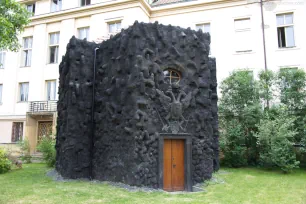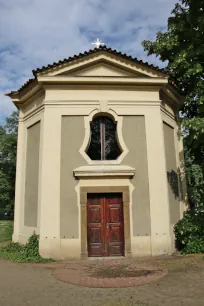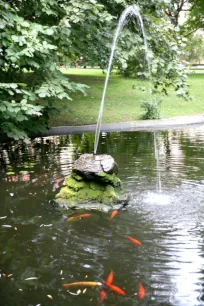If you’re looking for a quiet refuge away from the throngs of tourists in the historic center of Prague, there aren’t many better places to go to than the Vojan Park.



This park, which covers an area of about 2.4 hectares in the Lesser Town quarter of Prague, is completely enclosed by large buildings and – on its east side – a high white wall. The entrance, a single gate in the long blind wall, gives entrance to this cozy refuge.
History
The Vojan Park is considered the oldest garden in Prague. Its history can be traced back all the way to the 13th century, when it was the garden of an Archbishop’s court. The garden, which was destroyed in the early 15th century, eventually ended up in the hands of the Carmelite Order, who settled here in 1656 and turned it into an orchard.



The Carmelites were ousted in 1782 and in the 19th century the garden was transformed into a romantic park with an artificial pond. The park opened to the public in 1954, when it was named ‘Vojan Gardens’ after the Czech actor Eduard Vojan (1853 – 1920), who was born in the neighborhood.
Sights
The park is an odd mixture of an English-style garden, an orchard, a historical garden and a small formal garden. The park features many benches to relax, but it isn’t just a quiet refuge. There are in fact a few curious sights in the park.
The most striking sight is the Chapel of St. Elijah, which was built in 1660-1670 by the Carmelites as a garden temple in the shape of a grotto. Its facade is covered with dark gray stalactites. Above the entrance is a relief of an imperial crest. Inside, the walls are decorated with stones, glass and shells and oval frescoes on the ceiling depict events in the life of the prophet Elijah.
Nearby is another, more conventional looking chapel, dedicated to St. Theresa of Avila, a Spanish Carmelite nun. The chapel was built in the first half of the 18th century in thanks for the fact that the convent had been spared from destruction during the siege of Prague by the Prussians in 1757. The chapel’s interior features original wall paintings by Jan Karel Kovář from 1745.
Tucked in the western corner of the park is a raised parterre with a pergola and a small formal garden with a central fountain. On a wall facing the parterre you can see a magnificent fresco of a sundial, from the late 17th century, that depicts the blessing of the convent of the Carmelites.
Near the northern corner of the park, you’ll find a memorial plaque that honors Jindřich Pavliš, who was responsible for this park from 1980 until 2011. Nearby is one of two fancy beehives. Speaking of fancy, you’re likely to encounter one or two peacocks strutting around in the park. And finally, there’s also a fish pond with a fountain in this small but lovely park.

